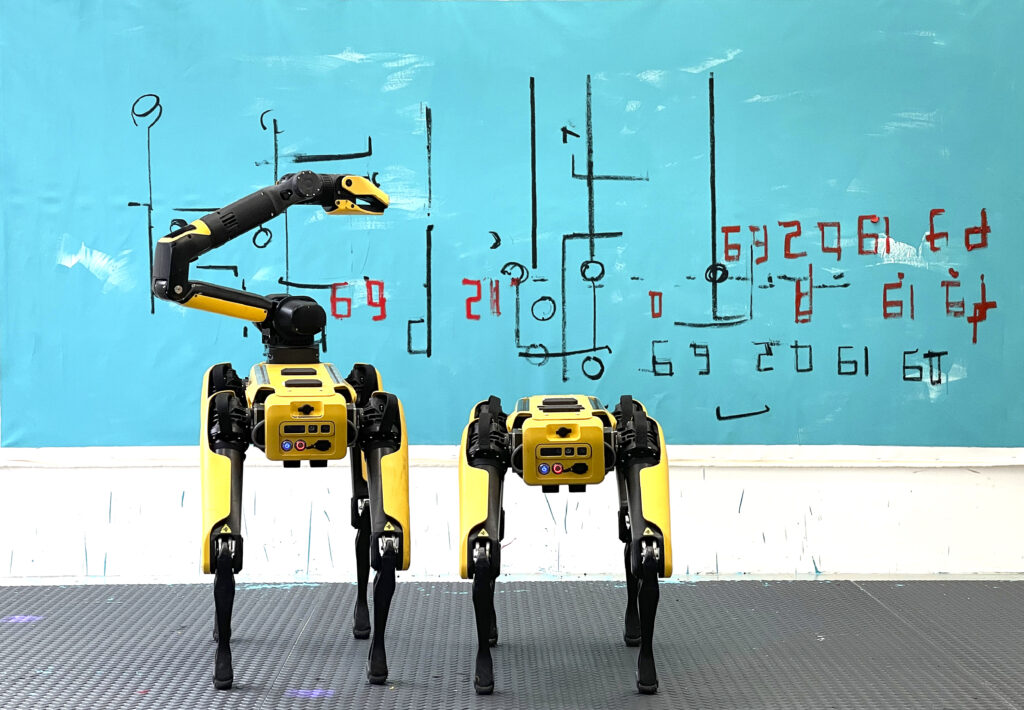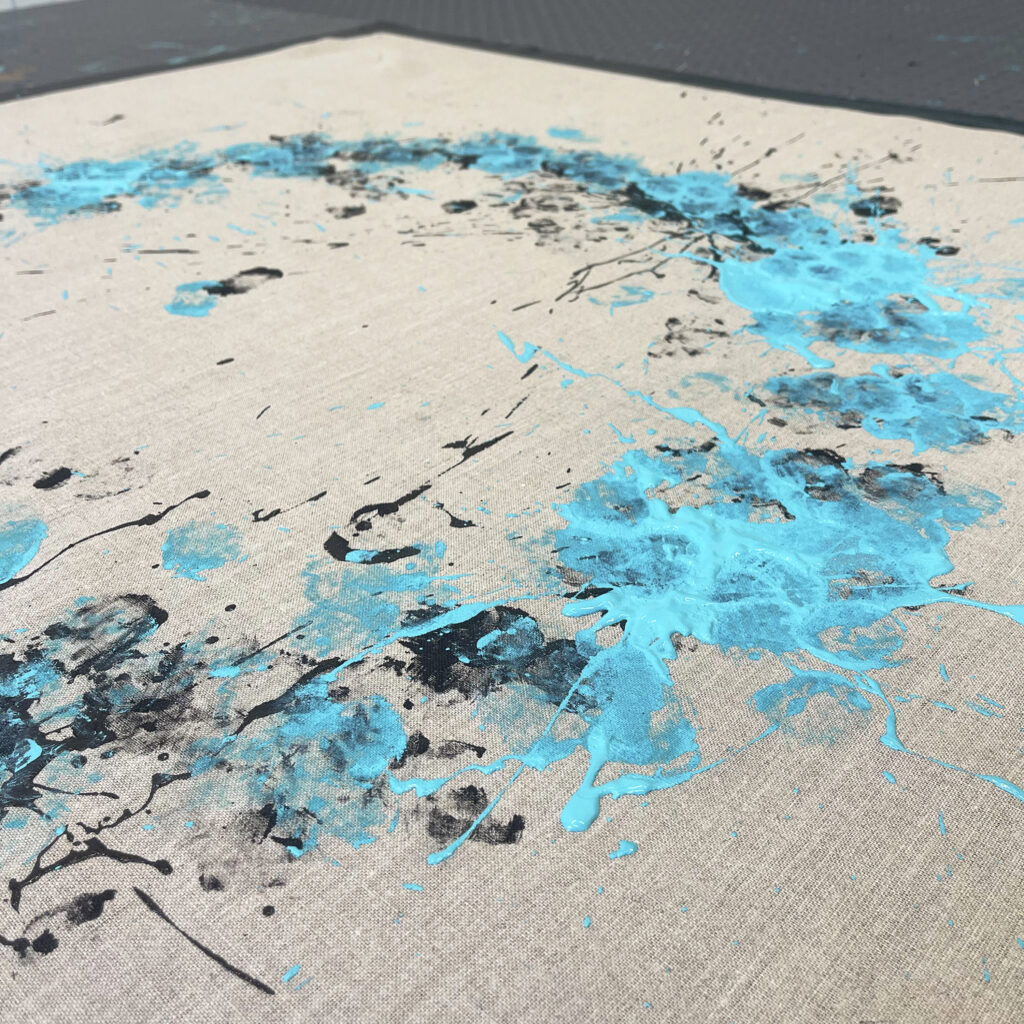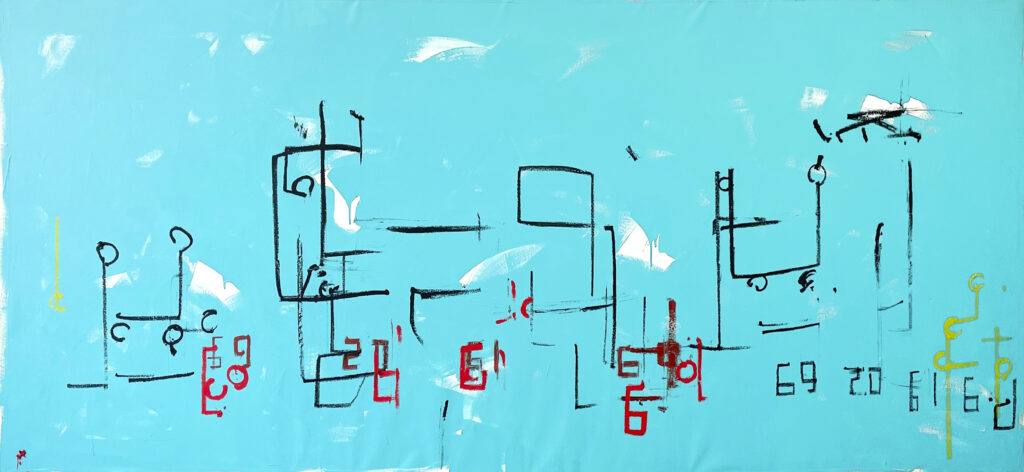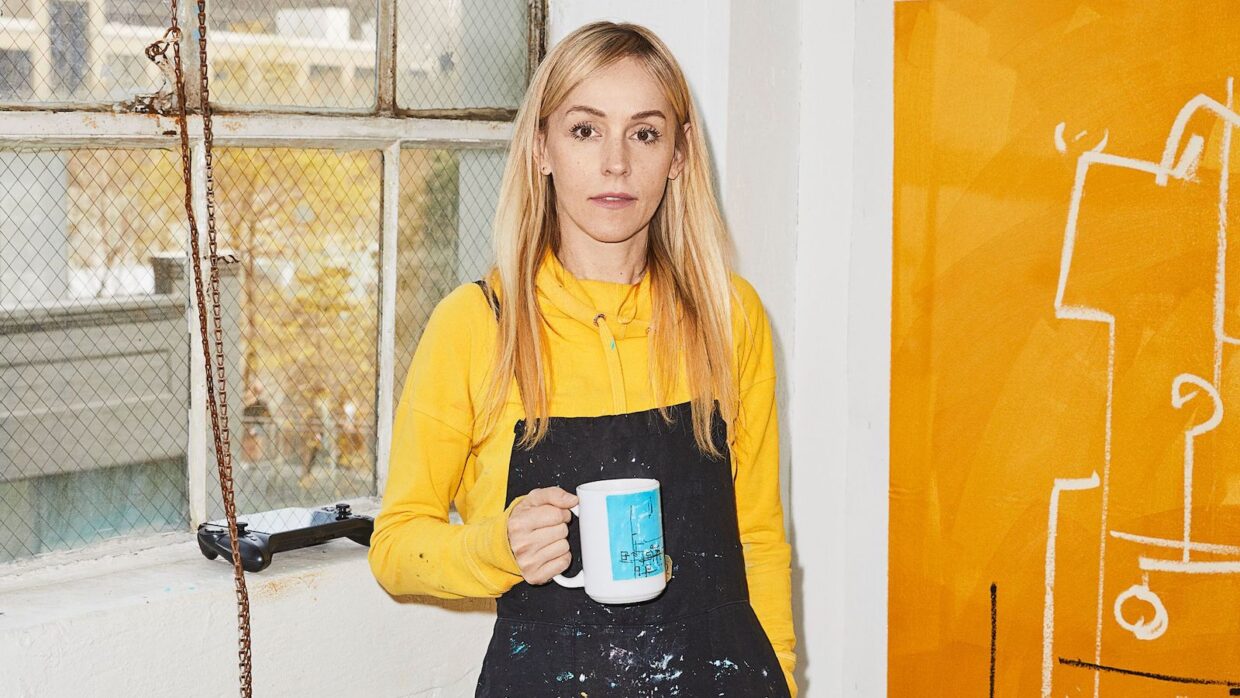|
Getting your Trinity Audio player ready...
|
Polish-American artist Agnieszka Pilat redefines the intersection of art and technology by placing machines at the heart of her work, drawing from her European figurative painting background. Her creations, deeply imbued with philosophical undertones, portray machines not just as tools but as entities with their own narratives, reflecting the evolving power dynamics between humans and technology.
Infusing her art with insights gained from her residencies at tech innovators like Boston Dynamics and SpaceX, Pilat’s paintings challenge traditional perspectives, envisioning a future where intelligent machines transcend their roles as mere objects to become dignified protagonists in art, potentially even evolving into art connoisseurs and societal influencers.
On the eve of her inclusion in the NGV Triennial 2023, Jing Culture recently caught up with Pilat to discuss how her work contrasts traditional European figurative painting and contemporary technological themes, her vision of machines as future art patrons, and how her artistic journey challenges traditional perceptions of machines.
Your art uniquely positions machines as central subjects. What inspired this focus, and how do you envision the evolving role of machines in human society and art?
Yes, I place machines at the center of my work – and there are two paths I approach them. One, the heroic portraiture of machines in my work is aimed to highlight the power they hold in the contemporary world. And when I say machines, I mean Intelligent machines – which yield power that only kings and queens of the past eras could dream of. My series of machine portraits is a commentary on that power structure.
But machines not only hold power, they are central to human evolution – they reflect the evolution of human species: we evolve, and machines evolve with us. That’s my second body of work, the paintings I make in collaboration with robots, this is where I see robots, A.I. driven machines as humanity’s offspring. I think of robots in my studio as my apprentices. Intelligent machines like them are humankind’s legacy, and it’s our greatest collective challenge to guide their development.

‘Art Critics’ in Agnieszka Pilat’s studio. Courtesy the artist
As an artist-in-residence at companies like Boston Dynamics, SpaceX, and Agility Robotics, how have these experiences influenced your artistic vision and the portrayal of machines in your work?
I am excited about the impending merger of the digital and physical worlds. Purely digital art has never captivated me as much because the digital world feels foreign to human nature. We’ve adapted well to digital experiences, but our innate sense of beauty stems from nature. That’s why hardware, machines, and robotics fascinate me. I’ve had the privilege of working closely with engineering teams tackling real-world problems.
Beauty, as someone once said, is in the rightful solution to a problem. A prime example is Digit, a bipedal robot from Agility Robotics. During my interactions with the CTO, Jonathan Hurst, I learned that Digit’s design, including arms for balance similar to a cheetah’s tail, is a result of solving functional challenges. This experience deepened my appreciation for the beauty of machines, a beauty born from honest and thoughtful design.
Your approach merges traditional European figurative painting with contemporary technological themes. How do you balance these seemingly contrasting elements to create a cohesive artistic narrative?
This contrast is crucial to my concept! For example, using the language of religious iconography in the ‘Infinite’ series at SpaceX, allows me to highlight the similarities between technology and religion. Using gold leaf, halos and auras around portraits of [the] Dragon Hatch Capsule highlights the messianic nature of technology. Religion and technology use similar forms of seduction: the promise of a utopian future, questions about immortality, and worship of what we fear in an attempt to control it. I think of machines as ecumenical objects in that sense.
Previous to SpaceX paintings, in my series of formal machine portraits, I treat the machines as the aristocracy of today. Like I said earlier, in history, portraits tell the stories of the privileged class. In the Middle Ages, the subjects were kings and queens. With the birth of capitalism, Dutch merchants indicated their growing influence by commissioning portraits.
In the 20th century, Warhol’s celebrity portraits were a commentary on the power of pop icons. In all these cases, portraiture was consistently aligned with ideology. So, likewise, I too decided to paint portraits of the new power broker of our time: the intelligent machine.

Agnieszka Pilat credit- Pilat Studio March in closeup
In your work, you explore the concept of machines not just as tools but as beings with potential for heroism and individuality. Can you elaborate on how you convey these qualities in your paintings?
My approach varies based on factors such as the machine’s age or intended purpose. For instance, in my ‘Disrupt‘ series, I painted vintage machines like derelict airplane engines and lunar space modules. They were portrayed using Rembrandt lighting and an earthy palette, highlighting their maturity and service to humanity. Sometimes, a machine’s design inspires a perception of gender, and I accentuate this through details like a red ribbon.
Conversely, for newer technologies like Boston Dynamics’ Spot, I adopted a bright, loud color palette to reflect its youthful, evolving nature. This method allows me to capture the essence of each machine, whether they are steeped in history or emerging into the world.
Looking towards the future, how do you perceive the role of art in shaping human understanding and interaction with advanced technology, especially considering your idea of machines as potential art collectors and societal influencers?
Intelligent machines will likely sponsor art in the future to enhance their prestige, similar to the Medici family during the Renaissance. This shift will signify a transformation in our power structures, recognizing machines as our equals. My upcoming exhibition ‘Heterobota‘ at the NGV Triennial, featuring Boston Dynamics robots, explores this idea. We invite viewers to envision a world beyond human-centric culture, moving towards a symbiosis with our creations.
The exhibition offers a glimpse into a new civilization era where machines are not just art creators but also connoisseurs and celebrities. Their emerging prominence could potentially be indicated if visitors are more inclined to take selfies with these robots rather than with the art, suggesting a possible rise in the robots’ influence and their evolving status as celebrities.

Credit: Pilat studio.



